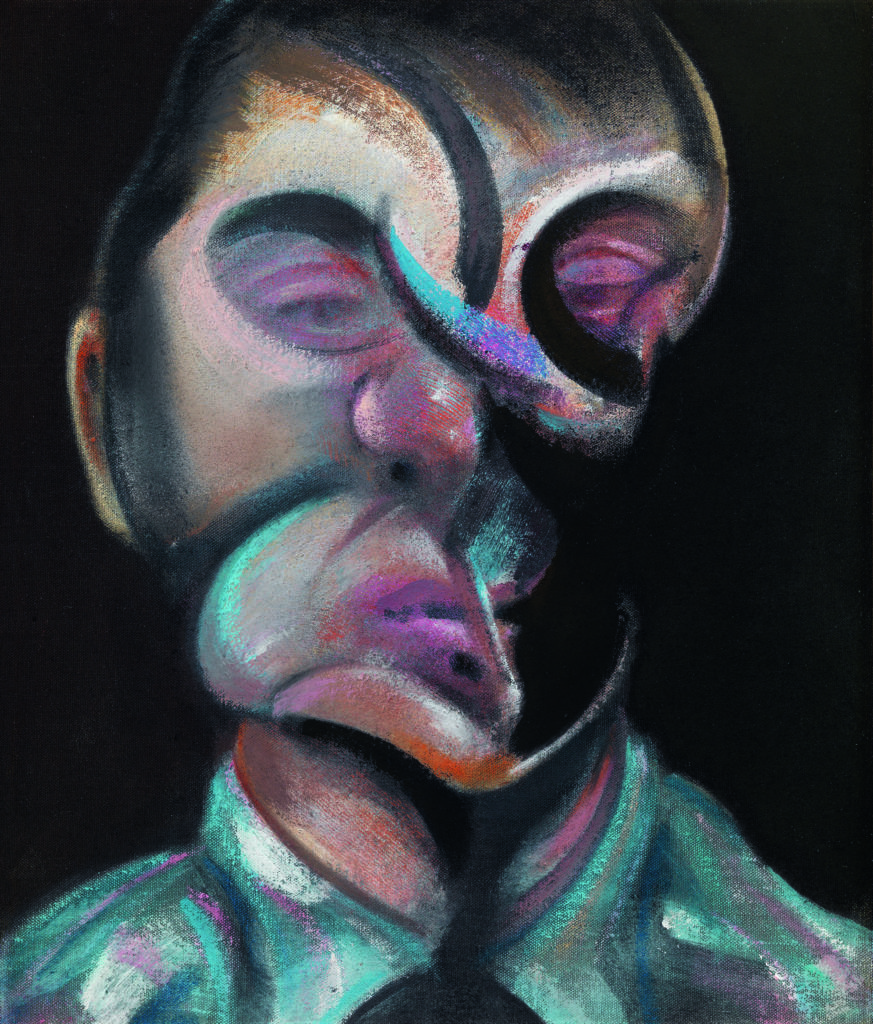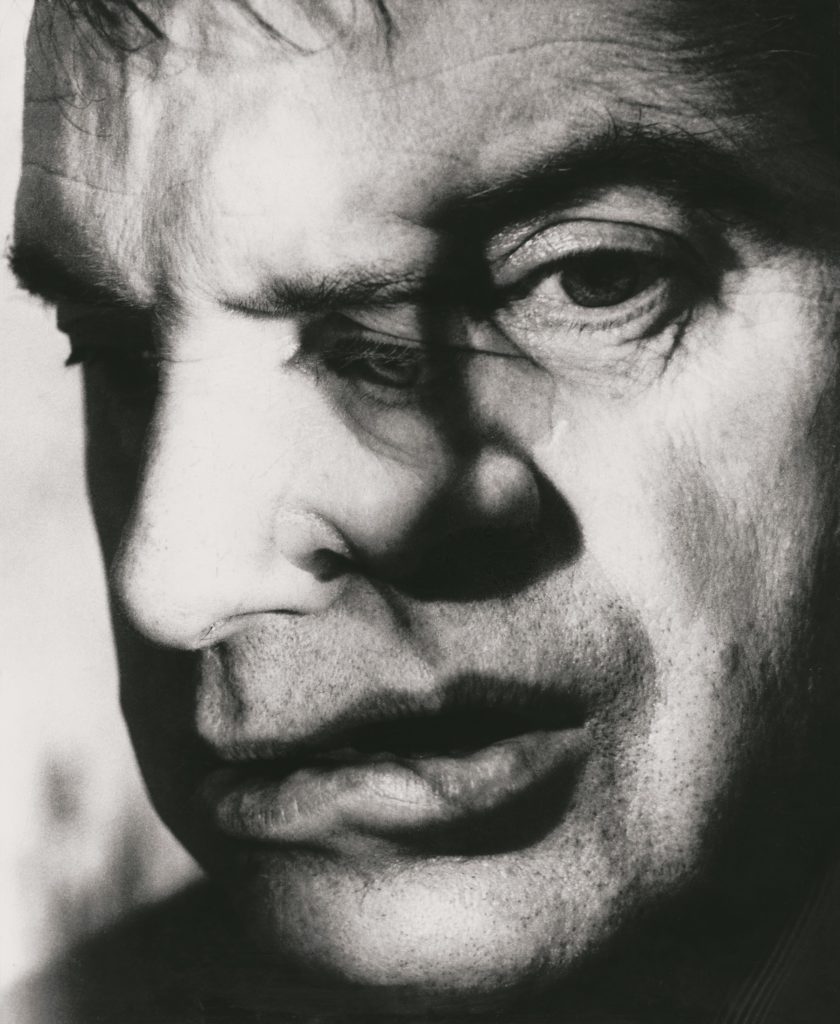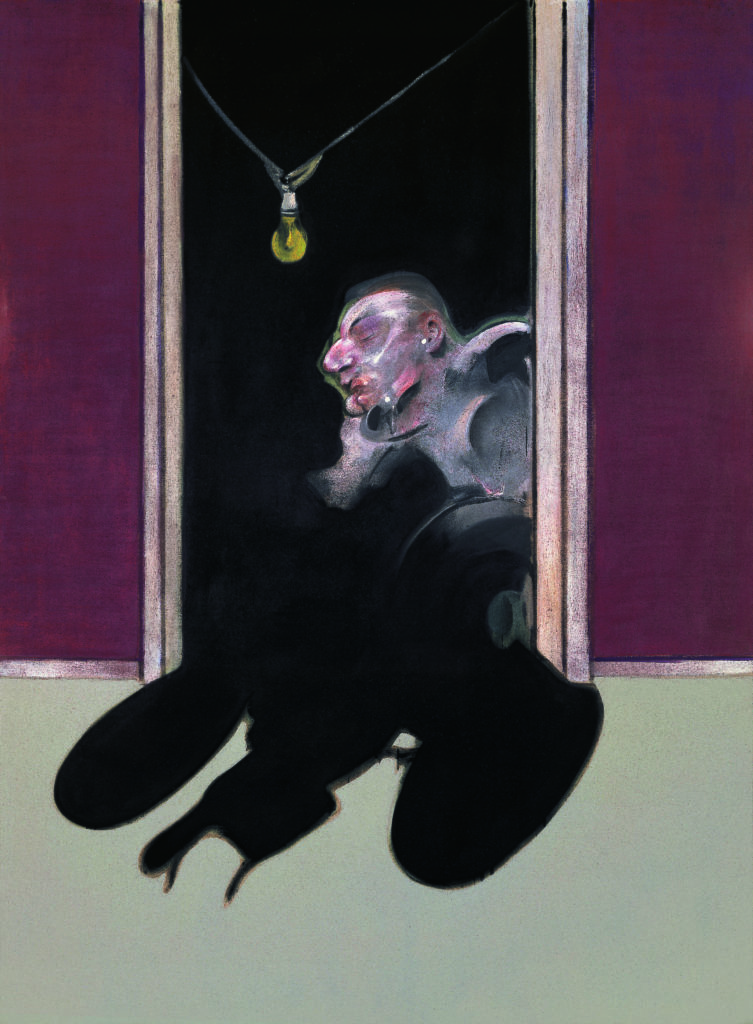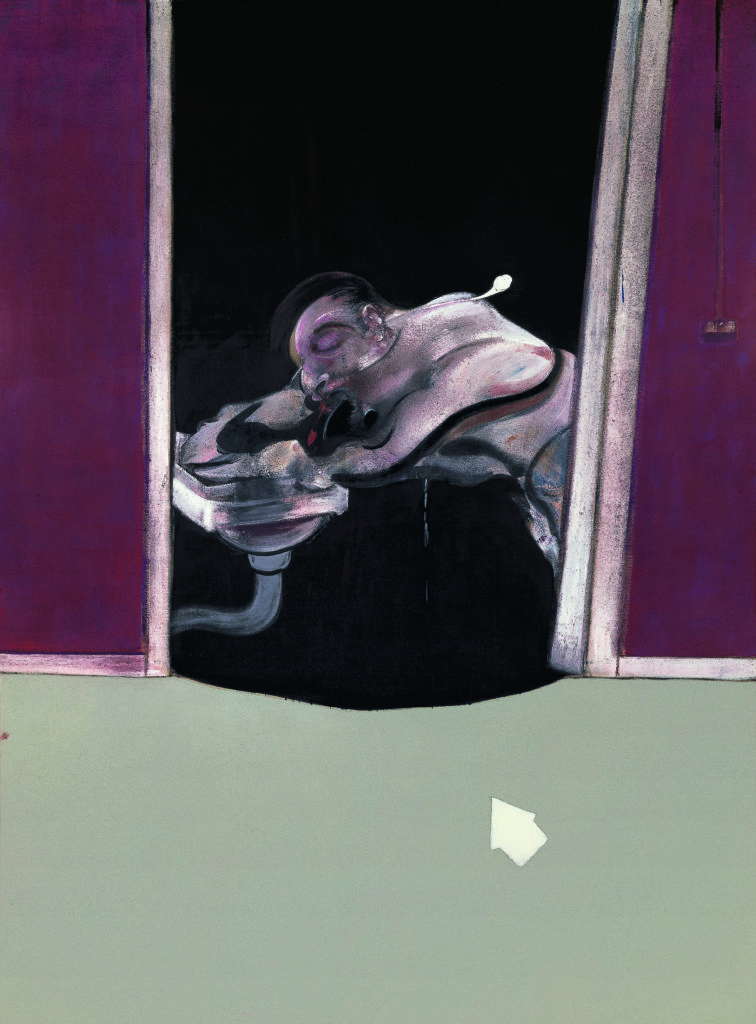This retrospective highlights Bacon’s intense commitment to the complexity of portraiture, exploring his ability to transcend the appearance of his subjects through an application of paint that is as expressive as it is innovative.
An in-depth exploration of portraiture
The exhibition brings together some thirty works from private and public collections in Europe and elsewhere, complemented by photographs by the artist. The exhibition, which is both thematic and chronological, begins with paintings from the late 1940s and extends to an unfinished painting found on his easel after his death, providing a comprehensive overview of Bacon’s artistic development.
Five key sections for understanding Bacon’s work
The appearance of portraits : Bacon’s early works feature figures expressing intense suffering, reflecting the post-war world. Paintings such as Head VI (1949) and Study of the Human Head (1953) show anonymous male figures, imprisoned in transparent cages or peering through streaks evoking X-rays.

Francis Bacon, Head VI, 1949, Arts Council Collection, Southbank Centre, London © The Estate of Francis Bacon. All rights reserved / 2025, ProLitteris, Zurich

Francis Bacon, Head of Boy, 1960, Private Collection, © The Estate of Francis Bacon. All rights reserved, ProLitteris, Zurich and DACS/Artimage, London 2025. Photo: Prudence Cuming
Beyond appearance : In the mid-1950s, Bacon stopped depicting howling figures, but continued to create ambiguous, unsettling images. He produced portraits of close friends and family, such as his patrons Robert and Lisa Sainsbury, as well as his friend Lucian Freud, capturing the essence of his subjects beyond their mere physical appearance.
Paintings inspired by the Masters : Bacon pays homage to the great masters who influenced him, such as Velázquez, Van Gogh and Rembrandt. He reinvents elements of their work, taking on the challenge of revisiting and questioning traditional portraiture. His interest in Van Gogh led him to introduce bright colors into his canvases, marking a notable evolution in his artistic approach.

Self-Portrait, 1972, The Lewis Collection,The Lewinski Archive at Chatsworth / Bridgeman images© The Estate of Francis Bacon. All rights reserved / 2025, ProLitteris, Zurich

J. S. Lewinski, Francis Bacon, 1967, National Portrait Gallery, London. The Lewinski Archive at Chatsworth / Bridgeman images© The Estate of Francis Bacon. All rights reserved / 2025, ProLitteris, Zurich
Self-portraits : Throughout his career, Bacon devoted himself to self-portraits, exploring his own face in over fifty works. These self-portraits, ranging from small heads to large triptychs, reveal a profound introspection and confrontation with his own mortality, especially after the loss of loved ones such as his partner Peter Lacy and his lover George Dyer.
Friends and lovers : Portraits of those close to Bacon occupy a central place in his work. He painted such figures as his companion John Edwards, his friend Henrietta Moraes, Colony Club founder Muriel Belcher, and his friends and colleagues Lucian Freud and Isabel Rawsthorne. These works testify to his intimate relationships and his ability to capture the complexity of human emotions.



Francis Bacon, Triptych May–June 1973, Esther Grether Family Collection,
© The Estate of Francis Bacon. All rights reserved, DACS / Artimage 2025, ProLitteris, Zurich, 2025.Photo: Prudence Cuming Associates Ltd
Immersive staging
The exhibition features a scenography combining paintings and photographs, offering total immersion in Bacon’s world. Photographs by renowned 20th-century photographers such as Cecil Beaton, Arnold Newman and Bill Brandt accompany the works, enriching our understanding of the artist’s context and entourage.
Don’t miss this unique opportunity to plunge into the fascinating world of Francis Bacon, where each portrait reveals an intense and moving human presence.
Practical information:
- Dates : February 14 – June 8 2025
- Where : Fondation Pierre Gianadda, Martigny (Suisse)
- Opening hours : Every day from 10.00 am to 6.00 pm
- Tickets and program : www.gianadda.ch
